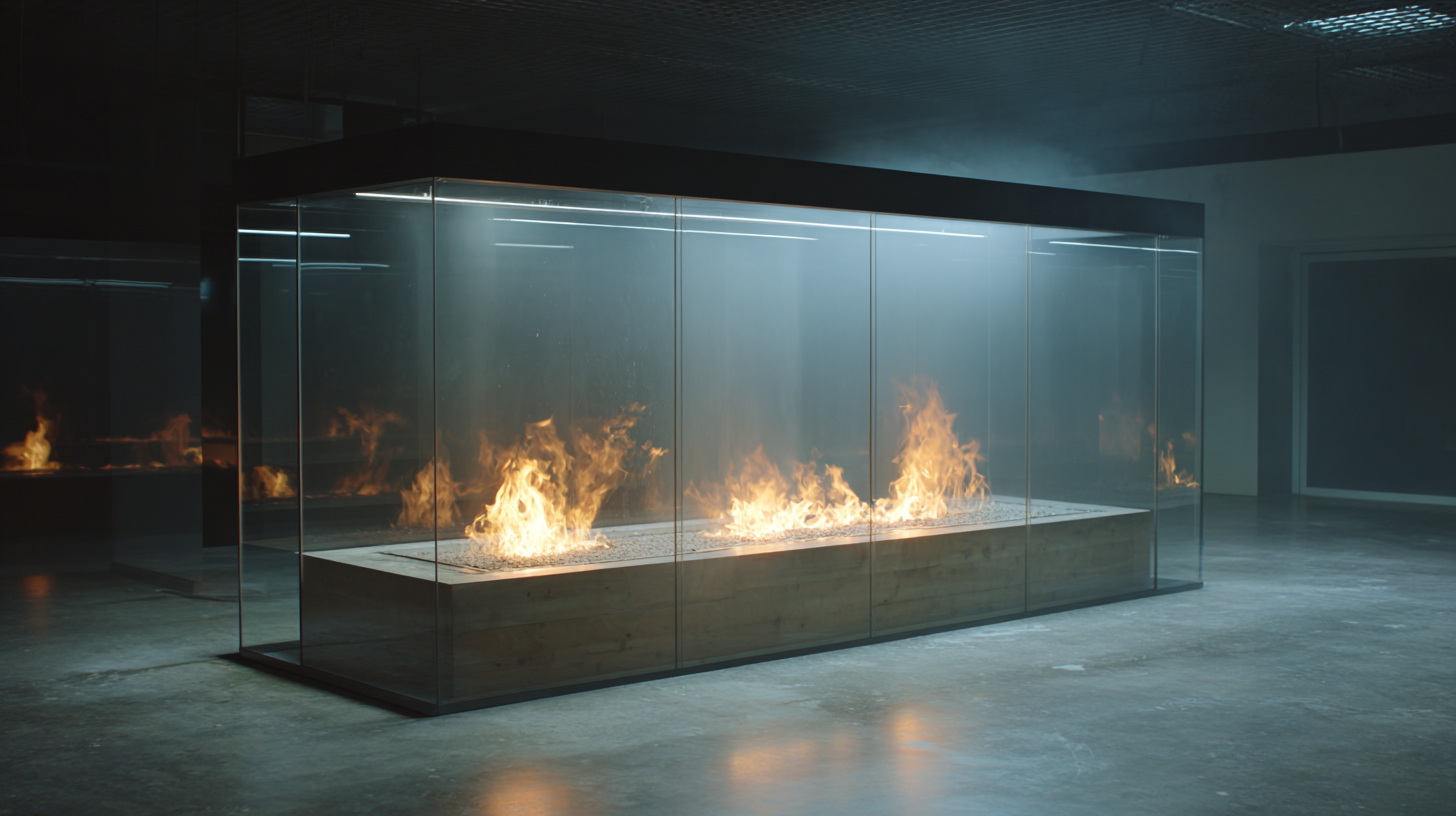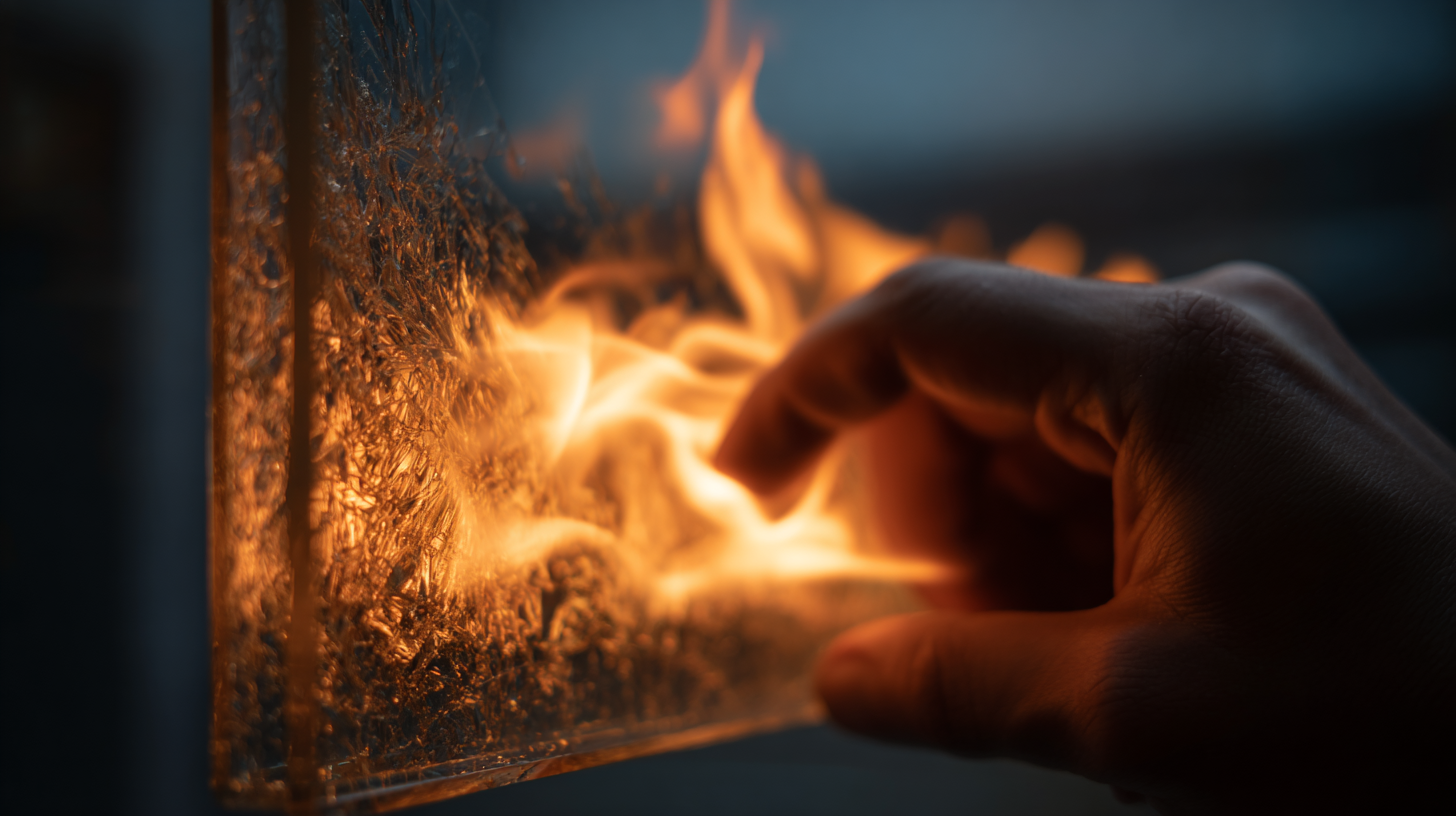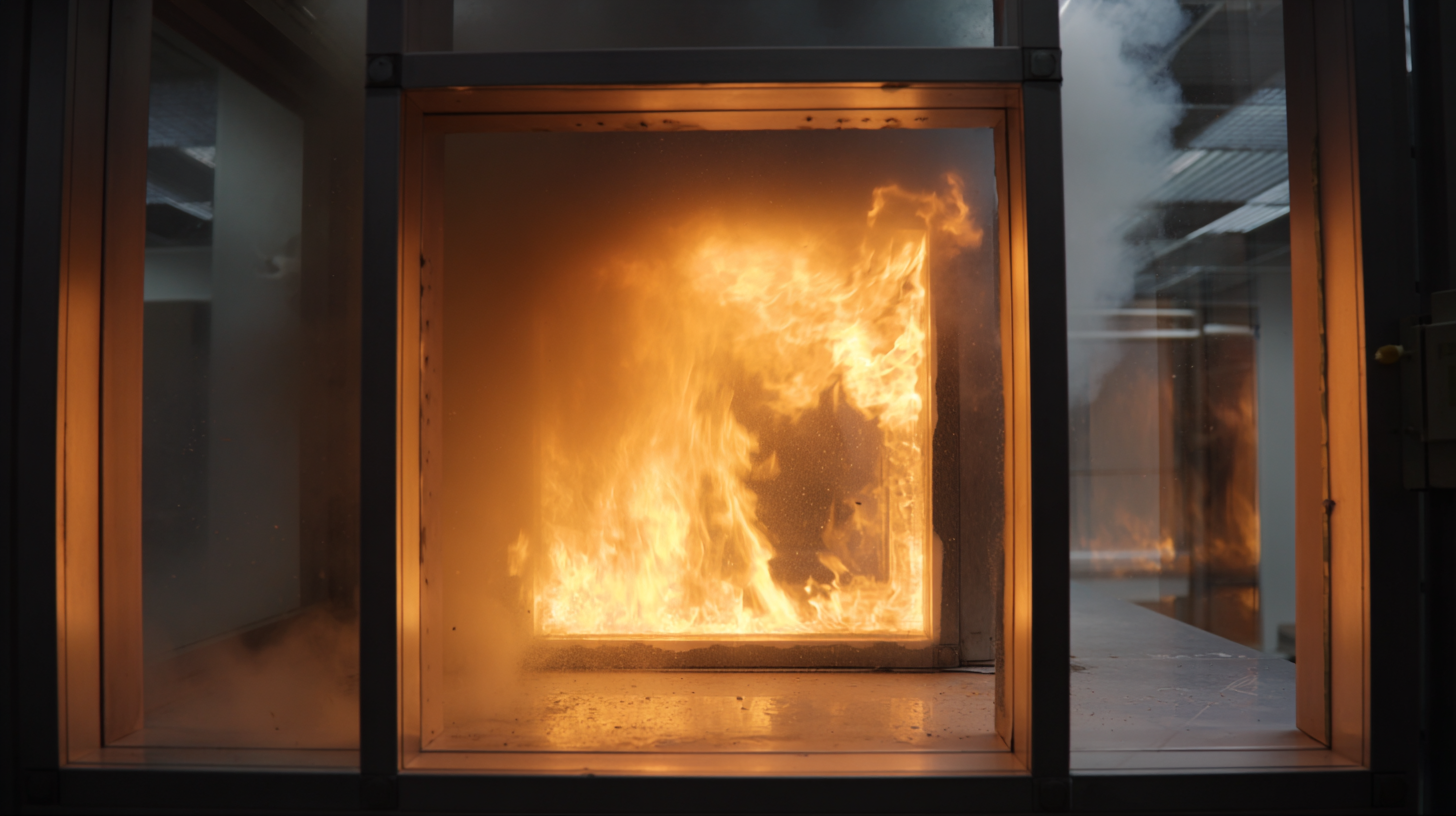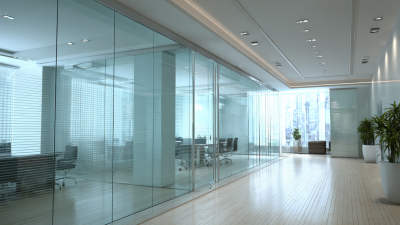
In recent years, the demand for fire-resistant glass has surged, driven by an increasing focus on safety and innovation in building materials. According to a report by Grand View Research, the global fire-resistant glass market size was valued at USD 2.53 billion in 2020 and is projected to grow at a compound annual growth rate (CAGR) of 5.7% from 2021 to 2028. This uptick is largely attributed to heightened awareness of fire safety standards and regulations in various industries, including commercial buildings, residential spaces, and infrastructure projects. Fire-resistant glass not only acts as a barrier against flames and smoke but also provides aesthetic appeal without compromising structural integrity. As architects and builders seek to enhance safety features, understanding the innovations, applications, and safety standards related to fire-resistant glass becomes crucial. This comprehensive exploration will illuminate the role of fire-resistant glass in modern construction and its significance in safeguarding lives and property.

 In recent years, the advancements in fire-resistant glass technology have significantly enhanced its performance and application across various industries. One of the key developments is the integration of advanced polymer interlayers that not only improve the glass's thermal insulation properties but also its structural integrity during exposure to high temperatures. These innovations ensure that the glass remains intact longer during a fire, providing critical time for evacuation and potentially protecting property.
In recent years, the advancements in fire-resistant glass technology have significantly enhanced its performance and application across various industries. One of the key developments is the integration of advanced polymer interlayers that not only improve the glass's thermal insulation properties but also its structural integrity during exposure to high temperatures. These innovations ensure that the glass remains intact longer during a fire, providing critical time for evacuation and potentially protecting property.
Moreover, the increasing demand for aesthetically pleasing safety solutions has led to the incorporation of fire-resistant glass in architectural designs. Modern fire-resistant glass is available in various finishes and can be customized to meet specific design needs without compromising safety standards. The introduction of clear and tinted options allows architects to create visually appealing structures while adhering to stringent fire safety regulations. These innovations greatly impact building codes and safety practices, making fire-resistant glass an essential component in the construction of commercial and residential properties.
Fire-resistant glass plays a critical role in enhancing safety and security within both commercial and residential buildings. According to a report by ResearchAndMarkets, the global fire-resistant glass market is poised to reach $4.2 billion by 2025, reflecting a growing demand for materials that can withstand high temperatures and prevent the spread of flames. This innovation is particularly vital in places like hospitals, schools, and office buildings, where the protection of occupants is paramount. Fire-resistant glass is designed to meet stringent safety standards, such as ASTM E119 and EN 13501, ensuring that it remains integral to the structure during a fire.
In residential settings, fire-resistant glass finds applications in areas like doors, windows, and partitions, providing both function and aesthetic appeal. The National Fire Protection Association (NFPA) emphasizes that incorporating this type of glass can help reduce the risk of fire-related injuries and fatalities in homes. As more architects and builders recognize the importance of integrating fire-rated solutions, the use of fire-resistant glass continues to grow; this is evidenced by the 15% annual increase in installations reported by the Glass Association of North America (GANA). Such statistics underline the necessity for innovative materials that offer protection while enhancing design flexibility.
Fire-resistant glass plays a critical role in enhancing safety standards across various industries, especially in commercial and residential buildings. The effectiveness of fire-resistant glass depends significantly on rigorous testing protocols that evaluate its performance under extreme conditions. According to a report by the National Institute of Standards and Technology (NIST), glass with a fire-resistance rating of at least 45 minutes can effectively prevent the spread of flames and smoke, thereby providing essential time for evacuation.
Testing for fire-resistant glass involves exposing samples to standardized heat and flame conditions, which are outlined in industry regulations such as ASTM E119 and EN 13501. These standards ensure that the glass maintains its integrity over a specified period, with Class A fire-rated glass typically showing superior performance. A recent analysis from the American Standards Association found that the market for fire-rated glass is projected to grow by over 6% annually, with advancements in glazing technologies contributing to enhanced durability and thermal insulation properties. The confluence of innovative safety measures and rigorous testing is vital for ensuring maximum safety in built environments.
The global construction market is witnessing substantial growth, with a projected value reach of $59.9 billion by 2025 and an expected compound annual growth rate (CAGR) of 6.09% until 2033. This surge is significantly driven by the increasing demand for fire-resistant glass, which plays a crucial role in enhancing safety standards across various sectors. The U.S. construction materials market alone was valued at $146.8 billion in 2022, indicating a steady CAGR of 3.7% during the forecast period, underlining the importance of innovation in building materials like fire-resistant glass.
In addition to construction, the fiberglass market, integral for fire safety applications, is also expanding. The market size for fiberglass is anticipated to see a robust growth trajectory, propelled by its diverse applications in wind energy, transportation, and architecture. Reports suggest that passive fire protection systems are being increasingly implemented, with a notable CAGR of over 4.5% from 2023 to 2032, indicating a rising awareness of fire safety measures within residential and commercial spaces alike. This trend reflects not only a shift towards more regimented safety standards but also the overall growth of materials that can withstand fire hazards effectively.
| Dimension | Value |
|---|---|
| Global Market Size (2023) | $3.5 Billion |
| Projected CAGR (2024-2030) | 8.5% |
| Key Application Areas | Commercial Buildings, Residential Homes, Industrial Facilities |
| Popular Types of Fire-Resistant Glass | Tempered Glass, Laminated Glass, Wired Glass |
| Main Regulatory Standards | ASTM E119, EN 13501, NFPA 80 |
| Market Drivers | Increased Safety Regulations, Growing Construction Activities, Rising Awareness |
| Geographical Trends | North America, Europe, Asia-Pacific |
 Fire-resistant glass has become an essential component in modern construction, particularly in buildings requiring enhanced safety from fire hazards. Evaluating the performance of this specialized glass involves a thorough understanding of its ability to withstand high temperatures and prevent the passage of flames and smoke. Various standards, such as ASTM E119 and EN 1364, set the benchmark for fire-resistant glass, ensuring that products can endure exposure to fire for designated time periods, thus protecting both property and lives.
Fire-resistant glass has become an essential component in modern construction, particularly in buildings requiring enhanced safety from fire hazards. Evaluating the performance of this specialized glass involves a thorough understanding of its ability to withstand high temperatures and prevent the passage of flames and smoke. Various standards, such as ASTM E119 and EN 1364, set the benchmark for fire-resistant glass, ensuring that products can endure exposure to fire for designated time periods, thus protecting both property and lives.
Innovations in fire-resistant glass technology have led to improvements in its structural integrity and thermal performance. Advanced manufacturing techniques allow for the creation of multi-layer glass systems that not only resist thermal breakage but also maintain clarity and aesthetic appeal. These developments expand the applications of fire-resistant glass beyond traditional uses, enabling its integration in facades, skylights, and partition walls. As safety regulations continue to evolve, manufacturers are increasingly challenged to meet more stringent criteria, pushing the boundaries of what fire-resistant glass can achieve in terms of safety and design versatility.





